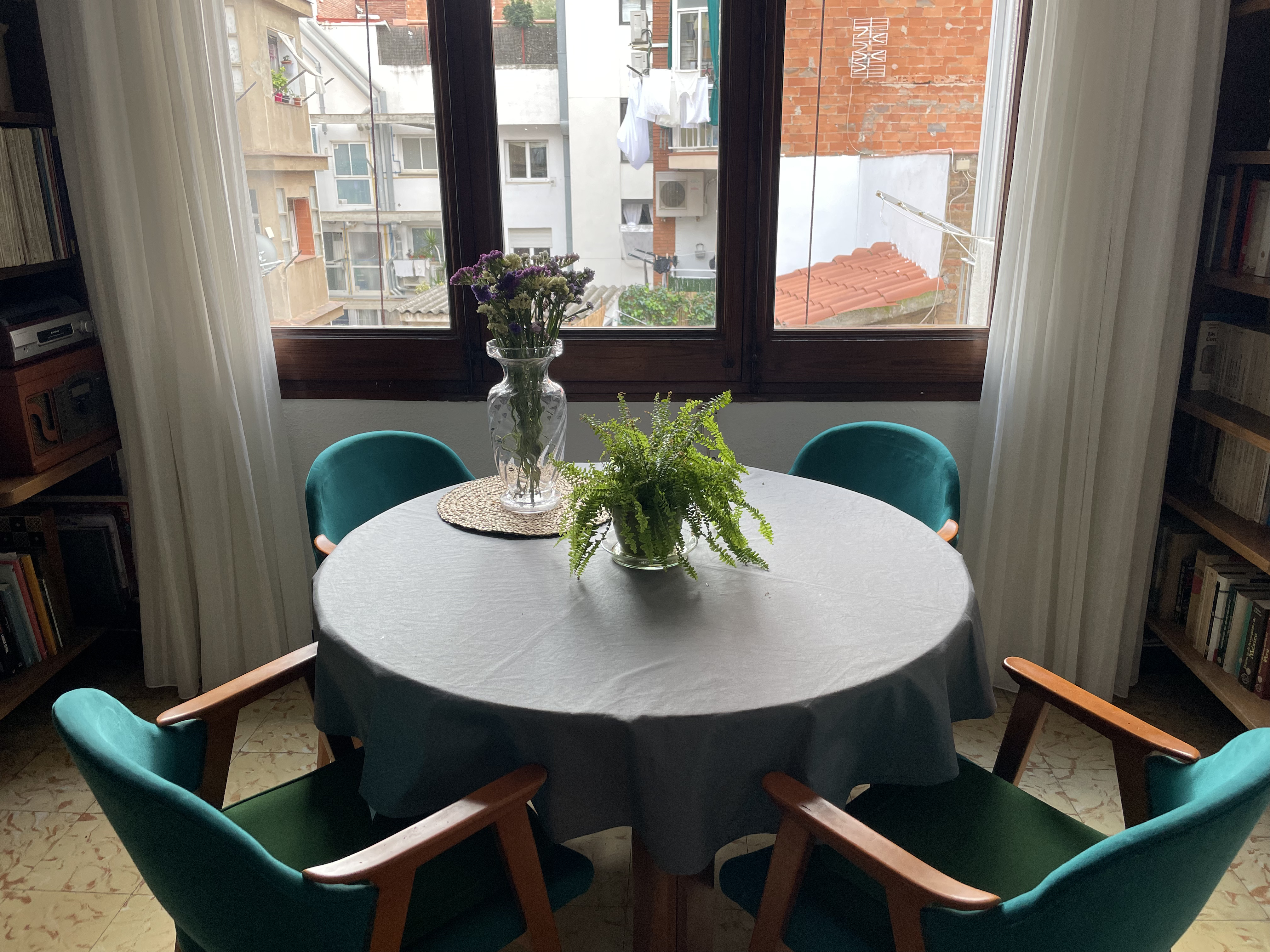Building Magic Machines
On our first day, it was all about rediscovering the happy accidents in prototyping and through that, access a bit of the magic that comes with the design process. To achieve that, we used materials found throughout the neighborhood and reclaimed from the FabLabBCN trash bins. With these materials and with very basic tools we were forced to get creative with the limitations. After sketching a quick self-portrait, we individually started building a 'magic machine' for this person pictured in the portrait. The outcome was a scrappy and fragile totem (pictured below), inspired by the longing for nature. The green satin bag contains a bit of soil, suspended on a construction of bioplastics, cardboard and discarded 3D-printed parts. In the concept of the 'magic machines', this totem can be used to guide the user to the nearest tree. Through that, much like a devining (or dowsing) rod, it represents a tool to interact with unseen forces of nature – speaking in the context of the imaginative, magical world we adventured to in this class of course.

My 'magic machine', consisting of bioplastics, cardboard, discarded 3D-printed parts as well as a green satin bag containing a bit of soil.
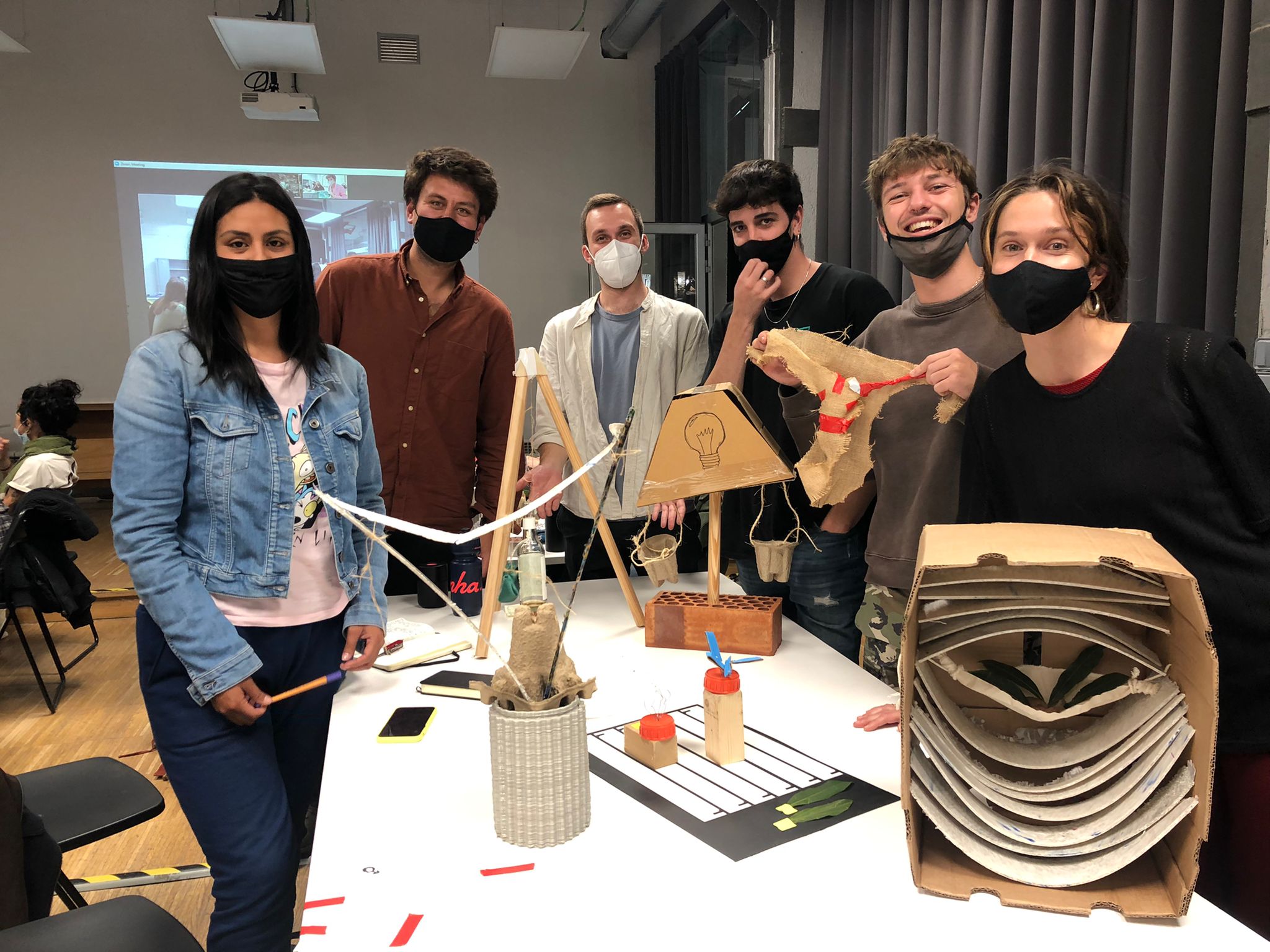
A collection of our group's artifacts.
Living with my own ideas
In order to understand human-plant interaction better, I decided to execute on one of my core goals: To prototype what plant-based sentience could feel like interacting with. Due to the time constrains of having only about 30 hours to both conduct the experiment and document it in form of a video, I opted for a dual approach. On the one hand I would script a Telegram-Bot, who would be a stand-in for the plant and with whom I could have an opening dialogue with. On the other hand Open-AI's GPT-3 language generation model would then represent the plant in a dinner conversation about consciousness. This specific instance of GPT-3 was pre-trained to lean into a philosophical text generation in order to make that possible. The final result can be seen below.
Talking to ferns as a speculative design inquiry.
Reflecting on the experiment
Besides the nature of learning a lot of new things about implementing both Telegram Bots in an Arduino IDE and accessing the GPT-3 API, the experiment itself yielded some interesting insights. As for the unscripted, AI-generated dinner conversation, I was surprised how fast I was attributing some concept of sentience or consciousness to the plant. The depth of the conversation and the philosophical content of it would have been more than enough for an entertaining and inspiring evening among humans. Instead, I found myself having this very conversation across dinner with my flatmate's fern – which was a bewildering experience, to say the least. The fact that I quickly perceived this plant to have some concept of itself and the world around it as well as being able to verbalize it adequately, led me on some unforeseen trains of thought. Among them, I was wondering if it would be insensitive to have a vase with cut flowers on the table while having the conversation, let alone the fact that I was having salad for dinner (an absolutely tasteless choice). Further inquiry into this strange feeling of interacting with an intellectually equal plant-based conversation partner is worth pursuing. Additionally, more than a half-dozen new collaboration opportunities emerged within the MDEF course, with many more conversations being sparked around the topic of plant consciousness and fern-related dinner jokes.
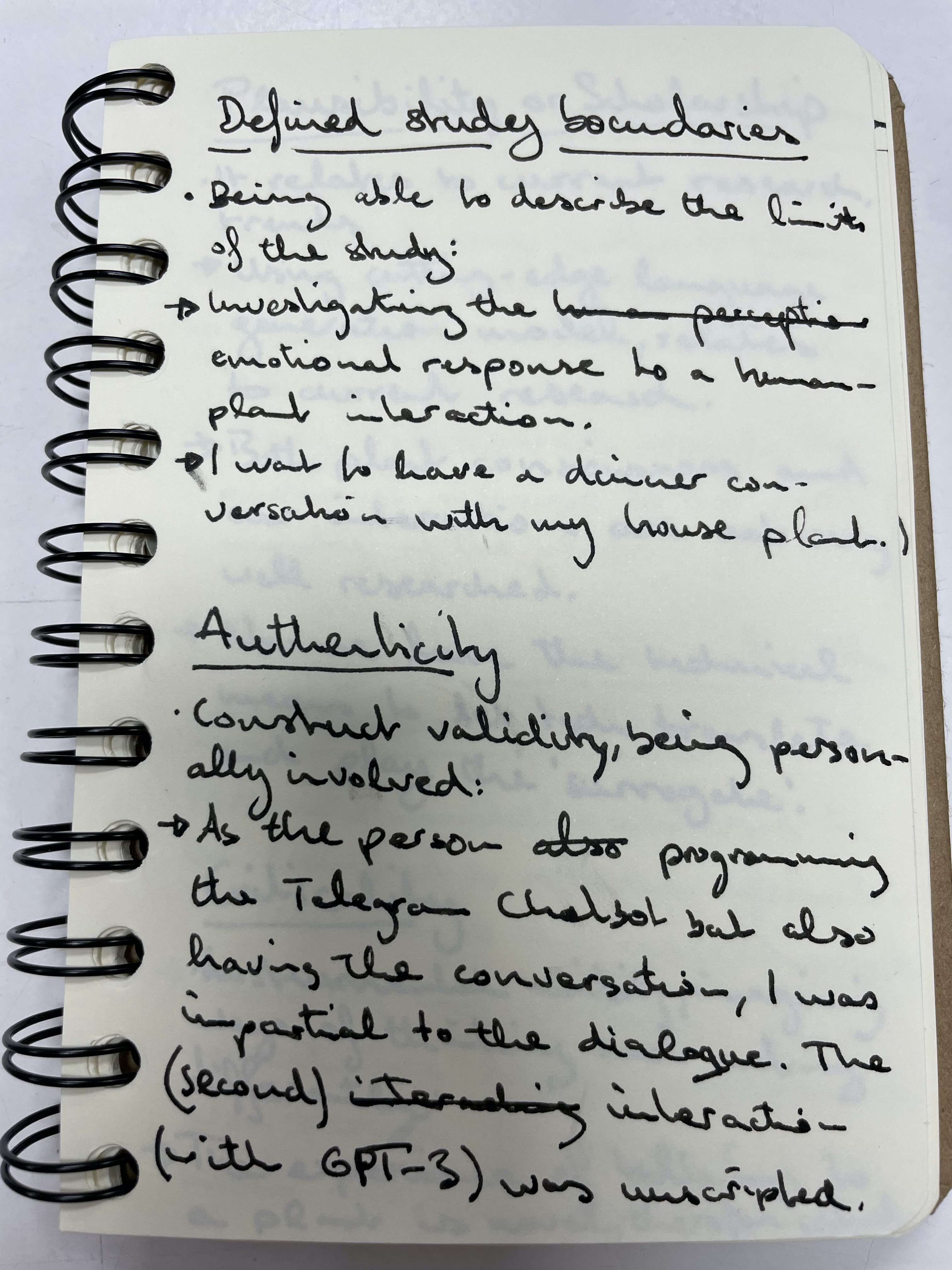

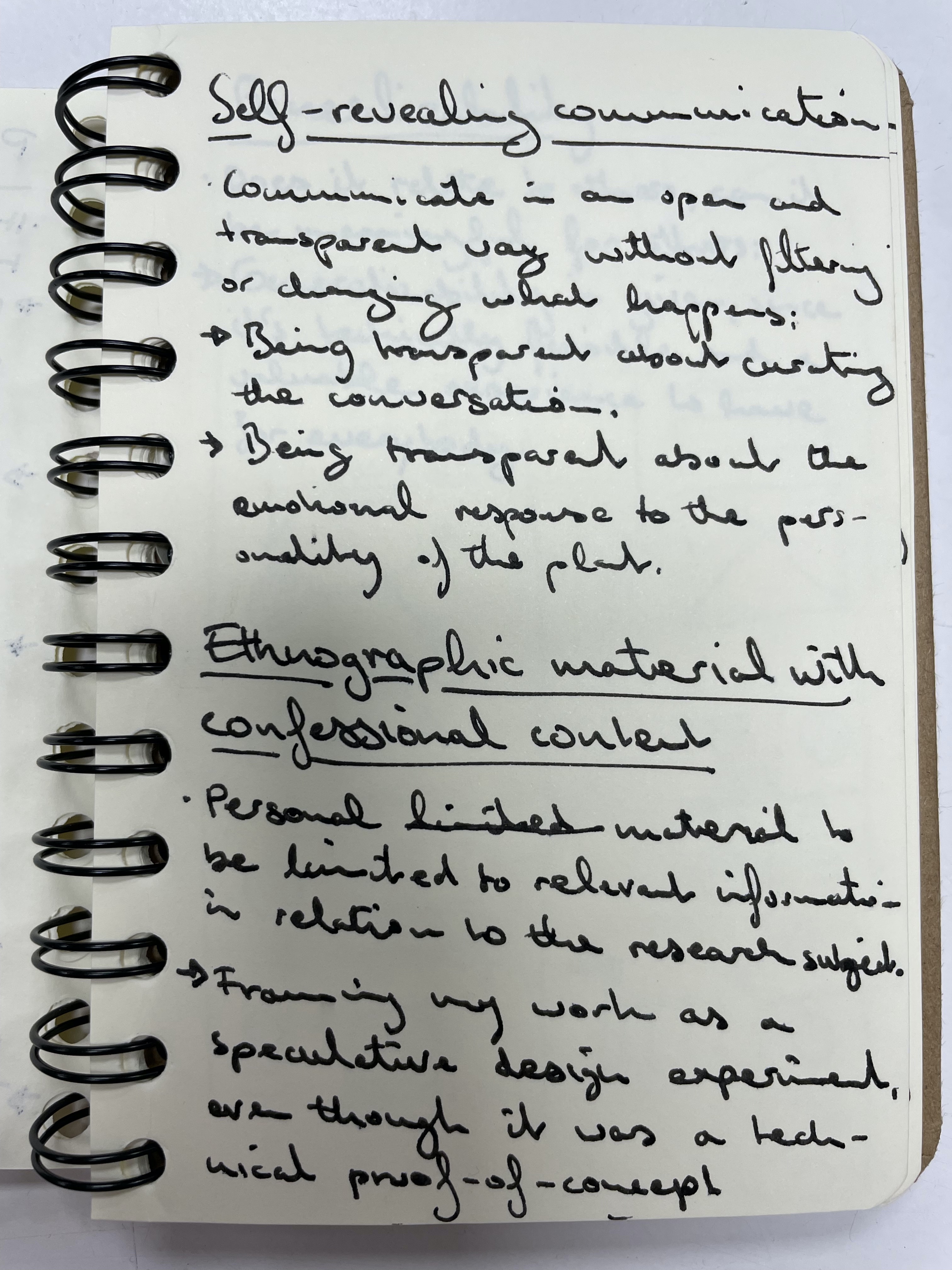
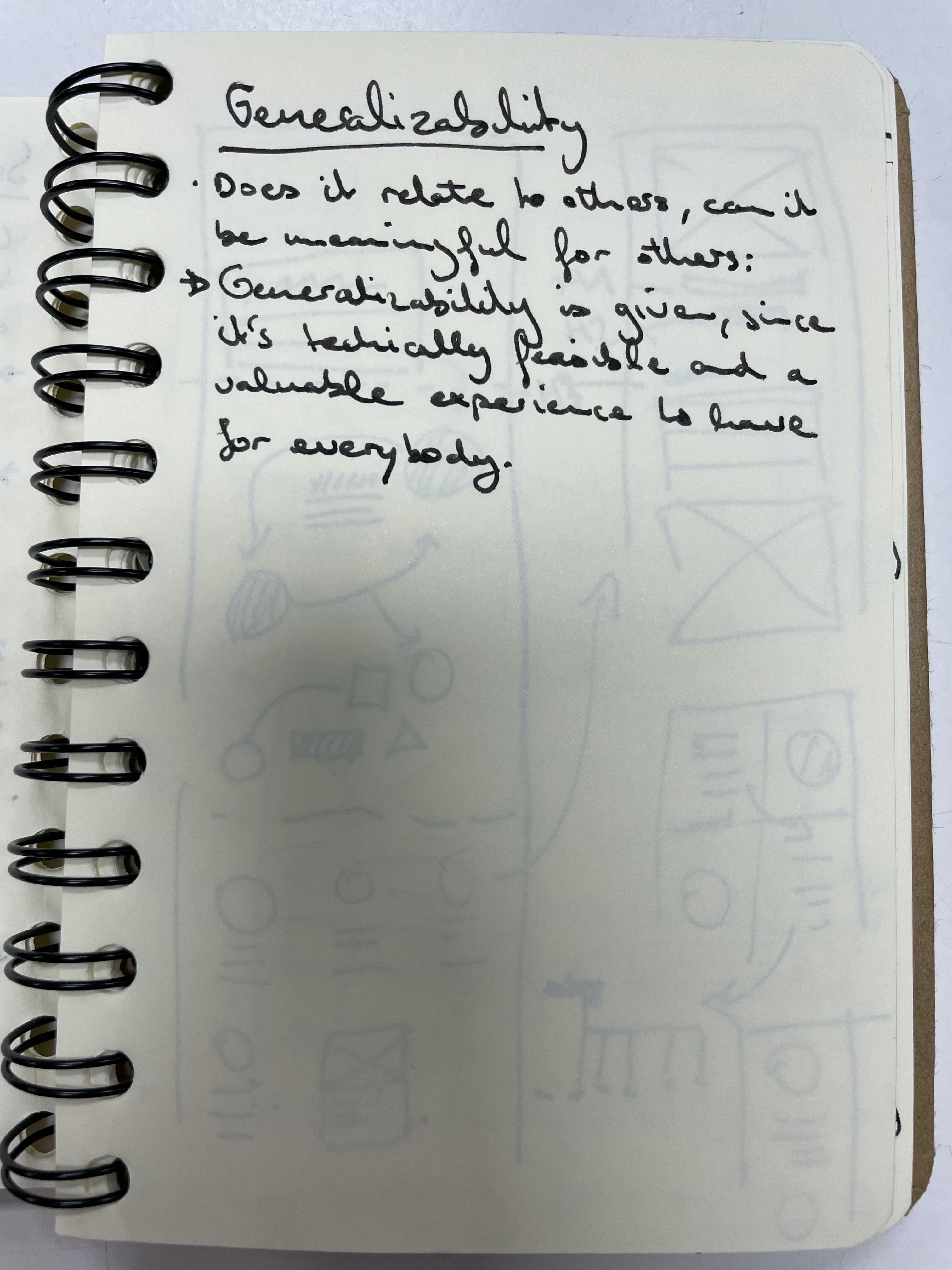
Further reflection for living with your own ideas produced in class.
